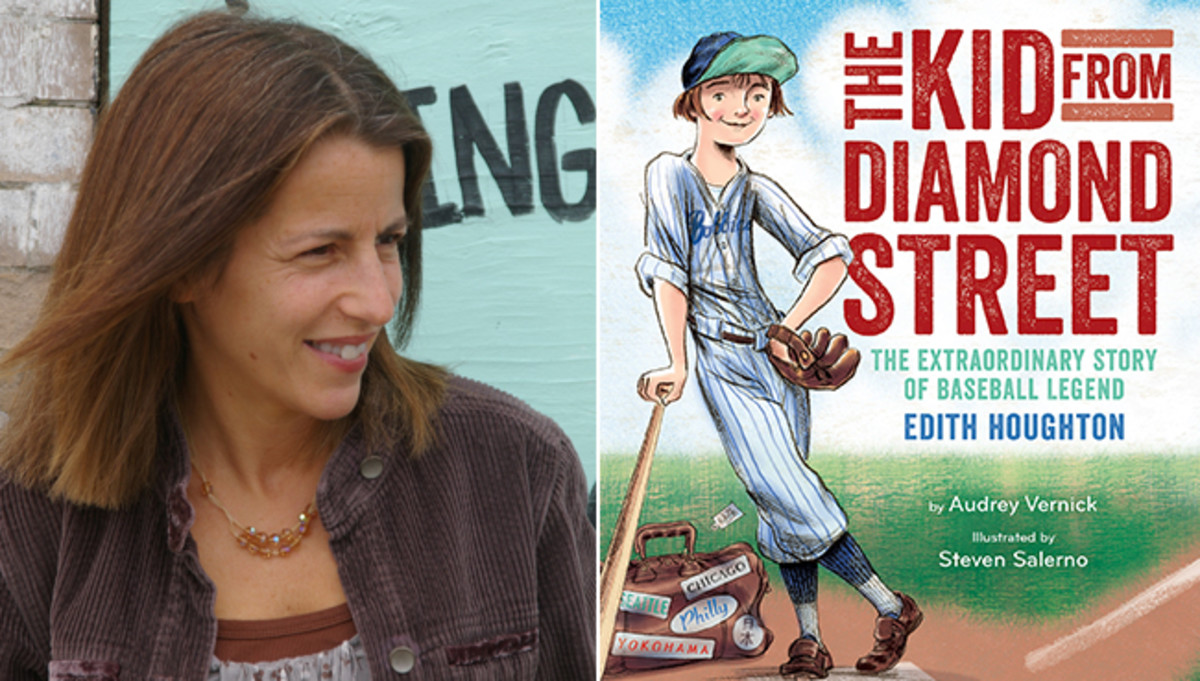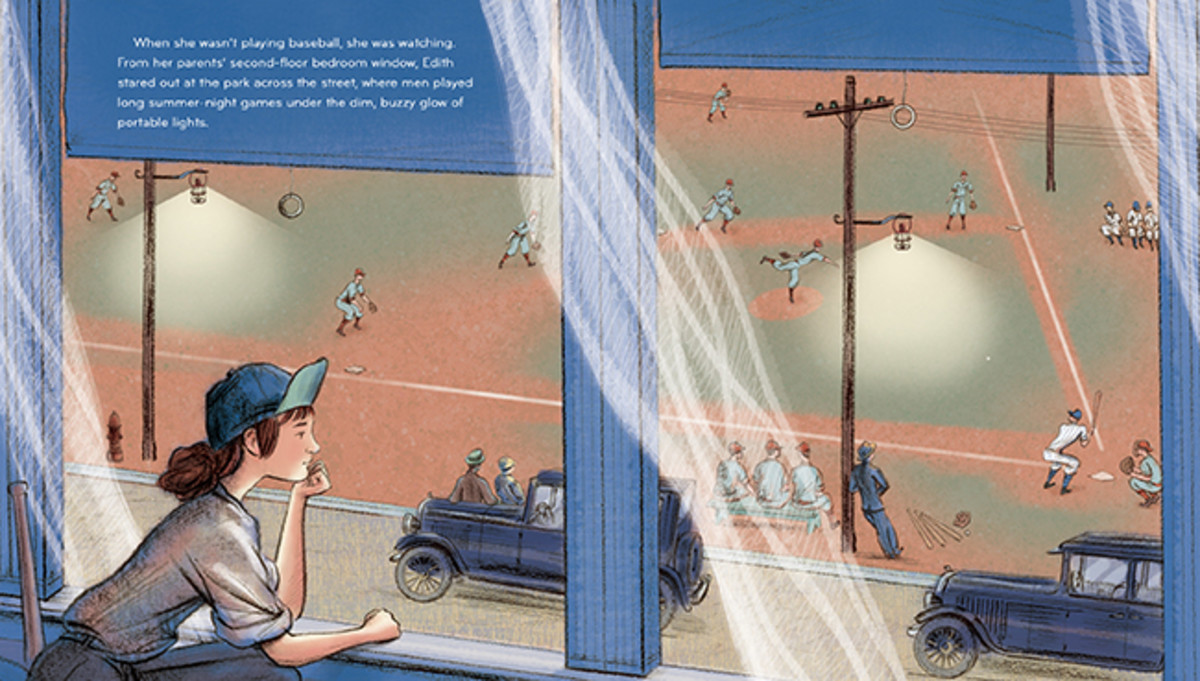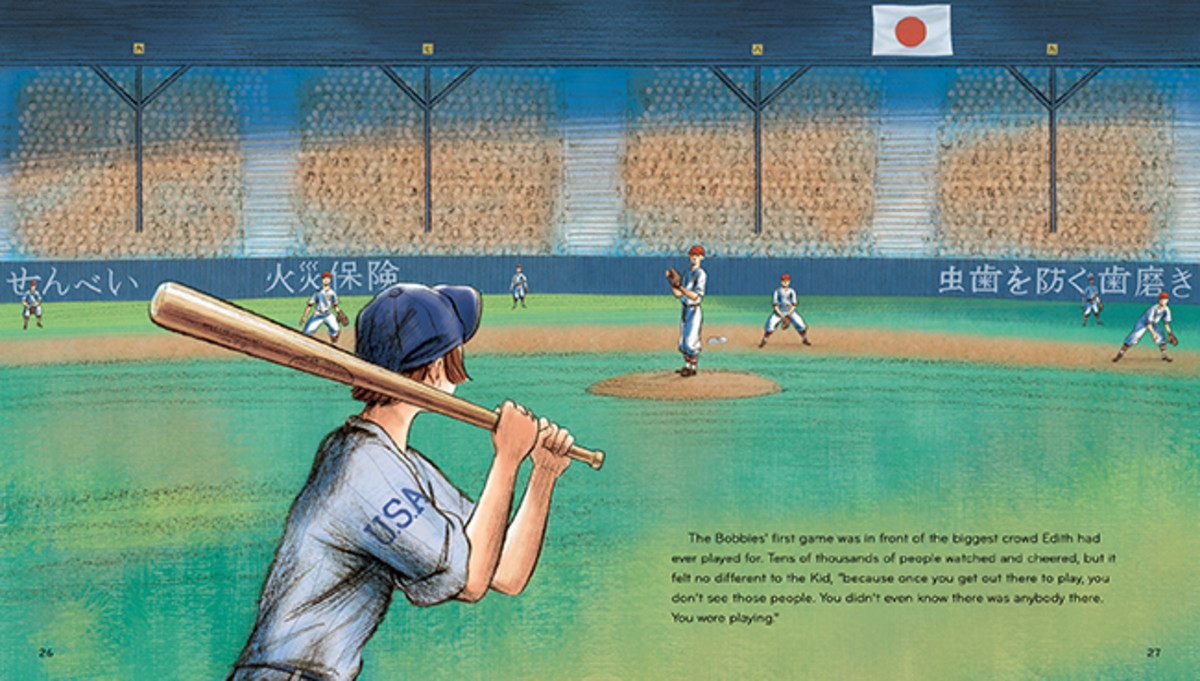How a 10-Year-Old Girl Broke Baseball Barriers a Century Ago


More than 100 years ago, girls did not play baseball. But Edith Houghton changed that. Growing up, she played with her brothers and kids in the neighborhood. In 1922, 10-year-old Edith tried out for the Philadelphia Bobbies, a professional women’s baseball team — and made the roster! Nicknamed “The Kid,” Houghton was the youngest and smallest player. But despite her age and size, she became the team’s starting shortstop and played against mostly male teams across the country.
Houghton’s fascinating baseball journey is the focus of author Audrey Vernick’s latest picture book, The Kid from Diamond Street. I recently spoke to Vernick about her connection to Houghton’s story and how “The Kid” has influenced girls and baseball.
What inspired you to tell Edith’s story? How did you discover it?
I wrote this other book called Brothers at Bat, which is a true story about an all-brother baseball team. While doing the research for that book, a person at the Baseball Hall of Fame suggested I look into a team called the Philadelphia Bobbies and think about them as the next subject for a book. When I first started reading about the Bobbies, I saw this little young star player on that team. I liked the team’s story but I loved Edith’s story. The idea that she did what she did at the time when she did it just takes my breath away when I think about it. The world was not set up for girls who wanted to play baseball. It still isn’t, but since she did it then, it’s kind of incredible to me.

How do you think that readers will relate to Edith?
My main takeaway from it was that it never occurred to her not to do what she wanted to do. She didn’t think, “Well, there aren’t many opportunities for women in baseball.” She just wanted to play and she kept finding ways to do it. I think that story applies well beyond baseball — for girls, for all marginalized groups, and for people who just aren’t seen as the main ones to do a certain thing.
How do you hope this book will impact young girls who want to grow up and play baseball or another predominately male sport?
I would love for everyone to have a sense of whatever it was that Edith had, whatever made it clear to her that “This is what I want to do, and this is what I’m going to do, regardless of the way things are set up in society.” I don’t think it’s a ton easier now for a girl to play baseball, but I think, well no, maybe it was even easier then when there was an all-women’s team. I think that her determination, that the fact that it wasn’t going to be an easy thing to do, had nothing to do with her decision. It was her passion, it was what she felt she wanted to do with all of her free time.
How do you think the message about sports given to girls is different than the message given to boys at a young age?
The idea that even girls who would prefer baseball are pushed to softball is a bit discouraging to me because you should play the sport that you are passionate about. Do you remember Mo’ne Davis’ story two years ago? We were all in awe of this raw talent and grace on the field. I had so many discussions with people when she was doing that because it’s definitely true that, to a large extent, she was getting that amount of attention because she is a girl. But we created that situation because so few girls get to be in that position. It’s a tricky thing. I definitely think there is so much more progress to be made. But if I look back, I can see that some progress has been made.

Who is your favorite baseball team currently?
The Yankees! I don’t need any time to think about that one.
Which athletes do you follow and what do you admire about them?
They no longer are active athletes, but Derek Jeter and Mariano Rivera when they were Yankees. There was something about their integrity and the way that they were such clutch players.
Photos courtesy Houghton Mifflin Harcourt Books
